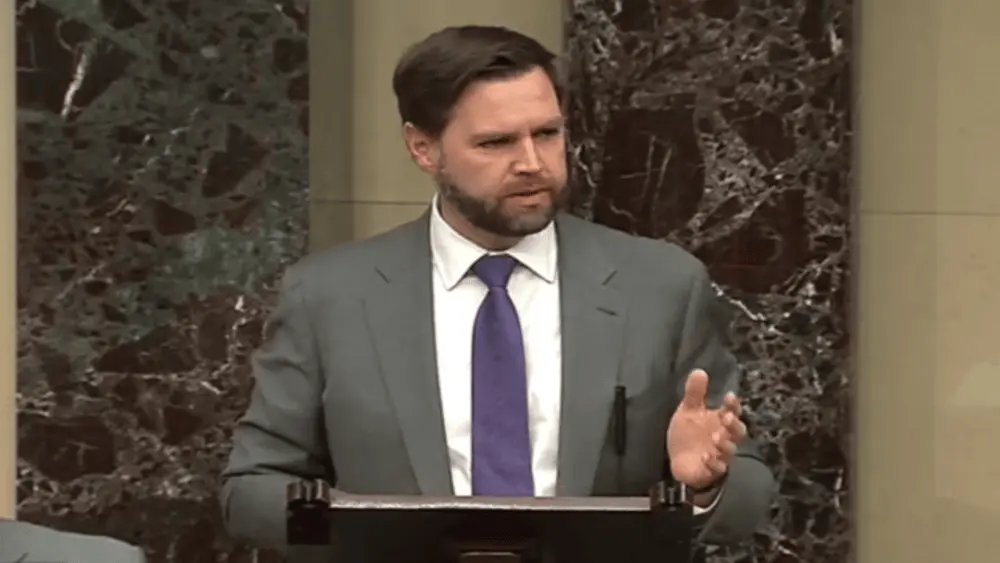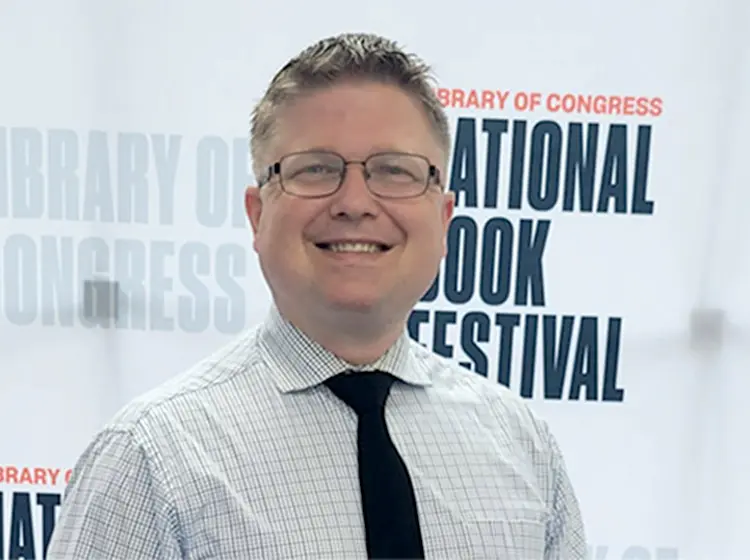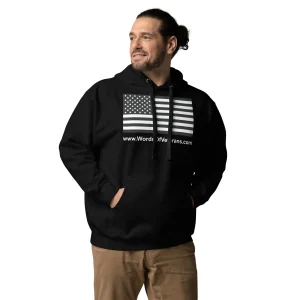JD Vance has recently become a prominent figure in American politics. He is known for his sharp political insights and unique background. As a businessman, author, and politician, his rise to Vice President of the United States is a pivotal moment. His journey from humble beginnings to the White House showcases his resilience. Vance has a strong ability to connect with a diverse range of voters. This blog will explore his achievements, political career, and positive influence.
Early Life and Background
Before stepping onto the national stage, JD Vance’s life story stood out for its narrative of overcoming adversity. Born in Middletown, Ohio, to a working-class family, Vance faced many of the challenges common to children in post-industrial America. His family struggled with poverty and instability, and Vance’s experiences were shaped by a fractured upbringing, marked by a difficult relationship with his mother and the economic decline of his hometown.
In his memoir, Hillbilly Elegy, Vance chronicled his experiences growing up in rural America, highlighting the social and economic challenges faced by many families in the region. The book resonated with readers, earning critical acclaim and widespread attention, especially in the context of America’s deepening political divisions. His portrayal of working-class struggles gave him a unique perspective and voice. This was especially relevant as the country faced globalization, deindustrialization, and cultural polarization.
Political Career
JD Vance entered politics with a strong understanding of the challenges faced by ordinary Americans, particularly in rural and post-industrial areas. After stepping away from politics for a time, he officially re-entered in 2022 by running for the U.S. Senate seat in Ohio. Vance’s campaign focused on challenging the political establishment and promoting policies that would benefit the working class. His message resonated deeply with voters who felt left behind by traditional politics. Vance advocated for economic prosperity and dignity for all Americans, particularly those in struggling communities.
Vance’s political platform focused on several key issues, including economic revitalization, job creation, and reducing government overreach. JD Vance’s unique background helped him connect deeply with voters in Ohio, particularly those feeling overlooked by the political elite. As a political outsider, his compelling life story resonated with many. Vance gained support from both sides of the political spectrum. He used his personal experiences to advocate for pragmatic and empathetic policies.
In his time as a U.S. Senator, JD Vance has made significant strides in pushing forward a series of legislative priorities aimed at improving the economic standing of working-class Americans. From promoting tax reform to supporting small businesses, Vance has been an outspoken advocate for creating an environment in which American industries, particularly in the manufacturing sector, can thrive. He has also championed issues related to education reform, healthcare, and immigration, always with a focus on improving the lives of middle-class families.
JD Vance: Vice President of the United States
JD Vance’s political career reached a new height when he was selected as the running mate of a prominent presidential candidate in the 2024 election cycle. His nomination as Vice President was seen as a strategic and symbolic choice, highlighting a commitment to bridging cultural and economic divides within the country.
Vance’s appeal to working-class voters, especially in the industrial Midwest, was a decisive factor. His background and messaging resonated strongly with voters in swing states pivotal to the electoral outcome. His presence on the ticket helped broaden the coalition of support, appealing to both urban and rural constituencies.
Once in office, Vice President Vance embraced his role as both a close advisor to the President and an independent advocate for American families. His focus areas included economic growth, healthcare reform, and infrastructure development. He consistently emphasized policies aimed at providing tangible improvements to the lives of working Americans affected by globalization, automation, and economic shifts.
Vance’s pragmatic leadership style and willingness to engage across party lines helped him become an effective partner in the administration. He used his platform to elevate the voices of those often marginalized in political discourse and champion policies that addressed immediate economic challenges while laying the groundwork for long-term prosperity.
JD Vance’s Achievements as Vice President
One of Vice President Vance’s most significant achievements has been his work on revitalizing the American economy, particularly in regions hit hard by industrial decline. Amid concerns about job losses and economic stagnation, Vance has pushed for policies aimed at reinvigorating manufacturing and supporting small businesses as engines of growth.
A centerpiece of his economic agenda was the launch of the American Renewal Initiative, a comprehensive infrastructure project aimed at modernizing the nation’s transportation and logistics networks. This multi-billion-dollar effort focused on repairing roads, bridges, and rail lines, with the dual goals of creating millions of jobs and enhancing the competitiveness of American businesses. The initiative received widespread bipartisan support, reflecting a shared recognition of the need to rebuild critical infrastructure.
Beyond infrastructure, Vance has advocated for policies to strengthen American manufacturing by incentivizing domestic production and innovation. His approach balances protection of American workers with a commitment to open markets and fair trade. By promoting workforce development programs and tax incentives, Vance seeks to create a sustainable economic environment where industries can thrive in a global economy.
In education, Vance has been a vocal proponent of expanding access to vocational and technical training. He argues that the economy’s future depends not just on college degrees but also on skilled tradespeople who can fill essential roles in manufacturing, construction, and technology sectors. His efforts include partnering with states and private organizations to develop apprenticeship programs that offer clear career pathways for young Americans.
Healthcare Reform: The Healthcare Access Act
Vance’s leadership on healthcare reform has also been a critical part of his legacy. With a focus on lowering prescription drug costs and increasing access to affordable healthcare, Vance was instrumental in the passage of the Healthcare Access Act, which aimed to streamline healthcare access for low-income families and reduce the financial burdens associated with healthcare. This landmark piece of legislation received bipartisan support and was considered a major victory for the administration.
Another key aspect of Vice President Vance’s tenure has been his focus on national security. JD Vance has worked closely with the President and other national security leaders to strengthen U.S. alliances abroad. His efforts have been especially focused on addressing the growing geopolitical competition with China. In addition to military readiness, Vance has emphasized the importance of economic diplomacy. He has prioritized creating fair and balanced trade agreements that benefit American workers.
National Security and Foreign Policy
Vice President Vance’s domestic agenda has been widely celebrated. However, his contributions to national security and foreign policy have also drawn significant attention. As the United States faces growing geopolitical competition, particularly from China, Vance has emphasized the need for vigilance. He has been a strong advocate for a robust and adaptive national security strategy.
Working closely with the President and national security officials, Vance has emphasized the importance of strengthening alliances, investing in military readiness, and pursuing economic diplomacy. He supports maintaining a technologically advanced military while also fostering cooperation with allies on issues like cybersecurity and trade.
Vance’s approach to foreign policy reflects his broader philosophy of balancing strength with pragmatism. He recognizes the need for the U.S. to remain a global leader while adapting to the complexities of 21st-century international relations.
Public Image and Leadership Style
Vice President JD Vance’s leadership style can be described as pragmatic, focused, and unrelenting. He is known for his ability to cut through political rhetoric. His leadership consistently delivers results that have a tangible impact on the lives of everyday Americans. Some critics argue that he can be too blunt or uncompromising at times. However, his direct approach has earned admiration from those who value honesty and dedication to fulfilling promises.
Vance’s ability to connect with ordinary Americans has strengthened his reputation as a leader who understands the working class. He often shares personal anecdotes in his speeches, making his message more relatable. His authenticity sets him apart from many politicians. He directly addresses the concerns of the American people. Rural voters especially gravitate toward him, feeling he champions the issues often overlooked in Washington.
Conclusion
Vice President JD Vance’s journey from a working-class upbringing in Ohio to the White House is a testament to resilience, vision, and leadership. He draws on his personal experiences and a keen understanding of middle America’s challenges. Through this perspective, Vance has made significant strides in economic policy and healthcare reform. Additionally, he has advanced important initiatives in education and national security.
His pragmatic and results-driven approach to governance has positioned him as a champion for working-class Americans and a transformative figure in contemporary politics. As Vice President, JD Vance has not only helped shape policy but also reshaped the narrative about what it means to serve and lead in America today.
Looking ahead, his influence will likely continue to shape the political landscape, inspiring future leaders to bridge divides and prioritize practical solutions for the nation’s most pressing challenges.










